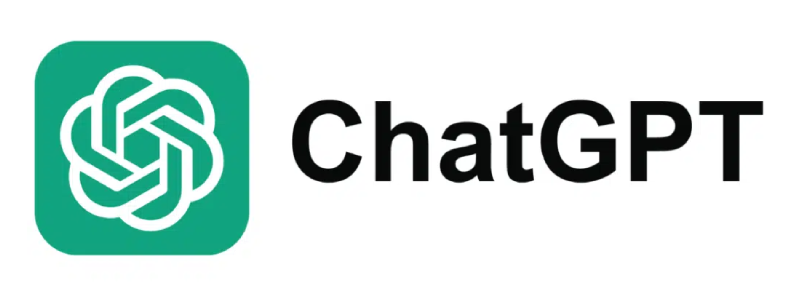Key takeaways
- Legal automation simplifies the creation of legal documents by using dynamic templates and data integration, reducing manual errors and saving time.
- Legal automation saves time by automating repetitive tasks, enhances brand consistency with standardized templates, and helps law firms scale by streamlining bulk document generation.
- Docupilot offers an easy-to-use platform for automating legal documents with features like template creation, integration with third-party apps, and secure document storage.
Legal processes attract a lot of paperwork and which require high levels of attention to detail. When these documents are handled with little to no involvement of software, they become highly prone to errors. Moreover, legal firms charge clients based on the hour during which they provide their services. On the other hand, the non-billable part, such as generating and managing documents, despite consuming a significant portion of their time, remains unchargeable.
In this context, legal automation software reduces the turnaround time to generate legal documents with built-in templates, advanced conditions and API integration. In this article, we help you understand what legal automation is and why businesses are heavily investing in legal document automation solutions.
What is Legal Automation?
Legal professionals and law firms draft legal documents like contracts, agreements, and forms in large numbers. They use Microsoft Word, Google Docs, and PDFs to generate and maintain legal documents.
But over time, this document generation process becomes challenging for everyone, be it law firms, knowledge workers, corporate legal departments, risk management services or financial services.
Legal automation is the process of using software services to automate the generation of legal documents using dynamic templates and gathering data from various sources to generate documents with ease and convenience.
Tools like Docupilot provide built-in templates for various legal use cases in addition to enabling legal professionals to create custom templates to create contracts faster.
Why is Legal Automation Important?
Legal automation is key to modernizing the legal industry. It provides several benefits:
- Time efficiency: Automates repetitive tasks, freeing up valuable time for higher-priority legal work
- Accuracy: Reduces human errors by ensuring consistency in document generation
- Cost savings: Cuts operational costs by minimizing the time spent on manual document creation
- Scalability: Allows law firms to handle growing workloads without increasing staff or costs
- Consistency: Maintains uniformity across all legal documents, protecting the firm's professional image
Advantages of Legal Document Automation
Here is how legal automation in document generation can benefit law firms and professionals.
Time-efficient Document Generation
Using legal automation software to draft legal documents, legal pros can save an hour per document. Whether in family law, corporate law, labor law, or any other legal sphere, a complete document automation solution provides key features like default templates, use cases, custom template builders, and cloud storage for document generation automation.
Understanding how document automation works and integrating these document automation solutions with data sources to automate data insertion can save hours of work.
Consider a law firm that generates legal documents, such as wills, trusts, and powers of attorney, as an example. Manually entering repetitive information which can take several hours per client.
By using document automation tools like Docupilot, in conjunction with data sources from Google Docs, Airtable, and CSV files, the firm can set up a system where client data is entered once into a simple form. Docupilot then automatically populates this data across as you generate each document, reducing document creation time from several hours to a few seconds per client.
Enables Legal Professionals to Focus on Core Tasks
Crafting legal documents can often be stressful and time-consuming, especially when lawyers have to meet tight deadlines and produce multiple documents daily. By creating templates and generating bulk documents such as data forms, client intake forms, and invoices, lawyers can free up their time to focus on billable work and take on more clients.
Serving More Clients at Ease
As your client base grows, legal workflow automation becomes crucial. Adopting a legal workflow automation solution helps you serve more clients efficiently and saves time on manual document drafting.
This, in turn, allows you to focus on business development, increase your capacity to handle document generation, and boost billable hours and revenue generation.
Impression on Clients
Automating document generation creates an impressive first impression that can be sustained throughout the service cycle. The high-quality legal documents produced with quick turnaround times help elevate your brand image and lead to increased referrals and clients.
Common Use-Cases for Automated Legal Operations
Legal automation tools like Docupilot are used across various legal functions to streamline operations:
- Contract creation: Generate contracts by populating dynamic fields from data sources, reducing manual effort and time
- Client intake forms: Automatically create and populate client intake forms with information from databases or forms, ensuring accuracy and efficiency
- Demand letters: Quickly generate personalized demand letters, saving time on document drafting and ensuring consistency
- Wills and trusts: Simplify the creation of complex legal documents like wills and trusts, reducing the risk of errors and ensuring compliance with laws
- Court filings: Automatically fill out court forms with the required client data, saving time and ensuring precision
When is Legal Automation Sought?
Legal automation becomes essential when businesses and law firms face increased demands due to growth and scalability:
- When scaling operations: As businesses grow, they need to produce more legal documents. Automation helps streamline the process, handling higher volumes efficiently without compromising accuracy
- To maintain consistency: As firms expand, consistency across documents becomes more critical. Legal automation ensures uniformity in document templates, maintaining brand image and legal compliance
- For bulk document generation: When firms or businesses need to generate repetitive documents in large quantities, legal automation significantly reduces time and minimizes errors, ensuring precision
When is Legal Automation Sought?
As a business expands into new markets, the need for automated legal documents becomes increasingly important. This is where legal automation comes in. By automating legal processes, businesses can streamline their operations and ensure their legal documents are accurate and up-to-date.
Generating repetitive documents in bulk
As businesses scale, the need for repetitive document generation also increases. However, manually creating these documents is time-consuming and error-prone.
A document automation solution helps streamline this process, allowing businesses to generate high volumes of documents quickly and with precision.
When Business is Scaling
Law firms looking to upscale should consider document automation to maximize productivity and cover new legal domains efficiently.
To Maintain Brand Consistency
Serving clients across a range of service lines requires consistency in branding each document. Automated legal documents are generated using pre-defined use cases and default templates to maintain consistent document quality. This preserves your brand image throughout a service cycle.
Types of Automated Legal Documents
Legal automation for document generation can be seen across domains like family law, civil law, employment law, labor law, estate planning, mortgage law, and business law. You can use legal automation software to create the following legal documents:
- Contracts: Documents with clauses that govern the relationship or business between two clients or a client and a law firm.
- Client intake forms: These are the initial paperwork that a client fills out after approaching a law firm. They include their contact information, demographics, business details, and required legal services.
- Court forms: Court forms are generated with spaces to be filled by parties for legal cases.
- Demand letters: A legal letter that depicts a dispute between two or more involved parties is called a demand letter.
- Wills: A will is a legal declaration of an owner’s intention to distribute his/her properties to chosen recipients.
- Trust: A legal document for distributing a person's assets to named beneficiaries is called a trust.
- Power of attorney: It is a legal document that gives a named person the power to act on behalf of the document's issuer.
- Probate petitions: This legal document begins the probate process of a person’s will after his/her demise for property distribution.
- Healthcare directives: This legal document is called a healthcare proxy. It allows someone to make medical decisions for those who cannot make them due to illness.
- Standard motions: It is a formal request obtained from a court to issue an order.
- Jury instructions: It is a list of guidelines a judge provides to a jury regarding the legal process to apply to a case.
Any legal document can be templatized and automated. As a user, you only need a skeleton document and must set the particulars according to requirements.
How to Automate Legal Document Generation using Docupilot?
Docupilot makes it simple to create and generate legal documents with its intuitive platform. Here’s how to automate the process:
Step 1: Create a template
Start by creating a dynamic template from scratch or use an existing document. Docupilot’s online editor allows you to select and edit sections of the document, making the creation process efficient.
Step 2: Insert dynamic fields
Add dynamic fields to your template using variables, conditionals, loops, and tables:
Step 3: Variables
Pull data from integrated sources like Google Sheets or CRM databases. These variables populate dynamic fields such as client names, dates, addresses, and service clauses, reducing the need for manual data entry.
Step 4: Conditionals
Use conditionals to automatically include or exclude specific sections based on user input. For example, in a prenuptial agreement, sections related to prior marriages can be included or excluded based on the client's response.
Step 5: Loops
Insert repeated fields (e.g., multiple service clauses or payment terms) to ensure all necessary elements are included without manually adding them each time.
Step 6: Tables
Use dynamic tables for structured data like fee schedules or service details, which are populated from external data sources.
Step 7: Test the template
Once your template is set up, test it by submitting sample data to ensure all fields are populating correctly and that the template works as intended.
Step 8: Integrate data sources
Link your template to external data sources such as Airtable, Google Docs, or CRM systems via integrations like Zapier. This allows for seamless data insertion and automates document population in bulk.
Step 9: Generate bulk documents:
Once everything is set, generate multiple documents at once by pulling data from your integrated sources. This can be used for contracts, intake forms, or any other type of legal document.
Step 10: Delivery and storage
After generating the documents, you can automate their delivery to clients via email or through other channels. Documents can also be securely stored in cloud-based systems like Dropbox or Google Drive for easy access and management.
Bottom Line: Step into the Future with Legal Document Automation
Legal automation software simplifies creating new legal document templates and generating bulk documents without errors. It saves countless hours and streamlines business operations. Choose the best legal automation software that matches your requirements and takes your legal document generation to the next level.
Docupilot: The Best Legal Automation Tool for Document Generation
Docupilot is a powerful and user-friendly tool for automating legal document generation, offering key features to enhance efficiency and accuracy:
- Customizable templates: Pre-built and custom templates for various legal documents ensure flexibility for any use case
- Dynamic fields and variables: Integrate variables from third-party apps like Google Sheets and CRMs, automating data population across documents
- Conditional logic: Tailor documents by automatically including or excluding sections based on client inputs
- Bulk document generation: Generate multiple documents at once, perfect for handling high volumes of legal paperwork efficiently
- Third-Party Integrations: Seamlessly integrate with tools like Zapier, Airtable, and Google Docs for smooth data flow
- Secure cloud-based platform: Access documents securely from anywhere, with data encrypted both in transit and at rest
- Affordable and scalable: Flexible pricing and easy setup make it ideal for law firms of all sizes
Sign up for a 30-day free trial period today!


.jpg)















